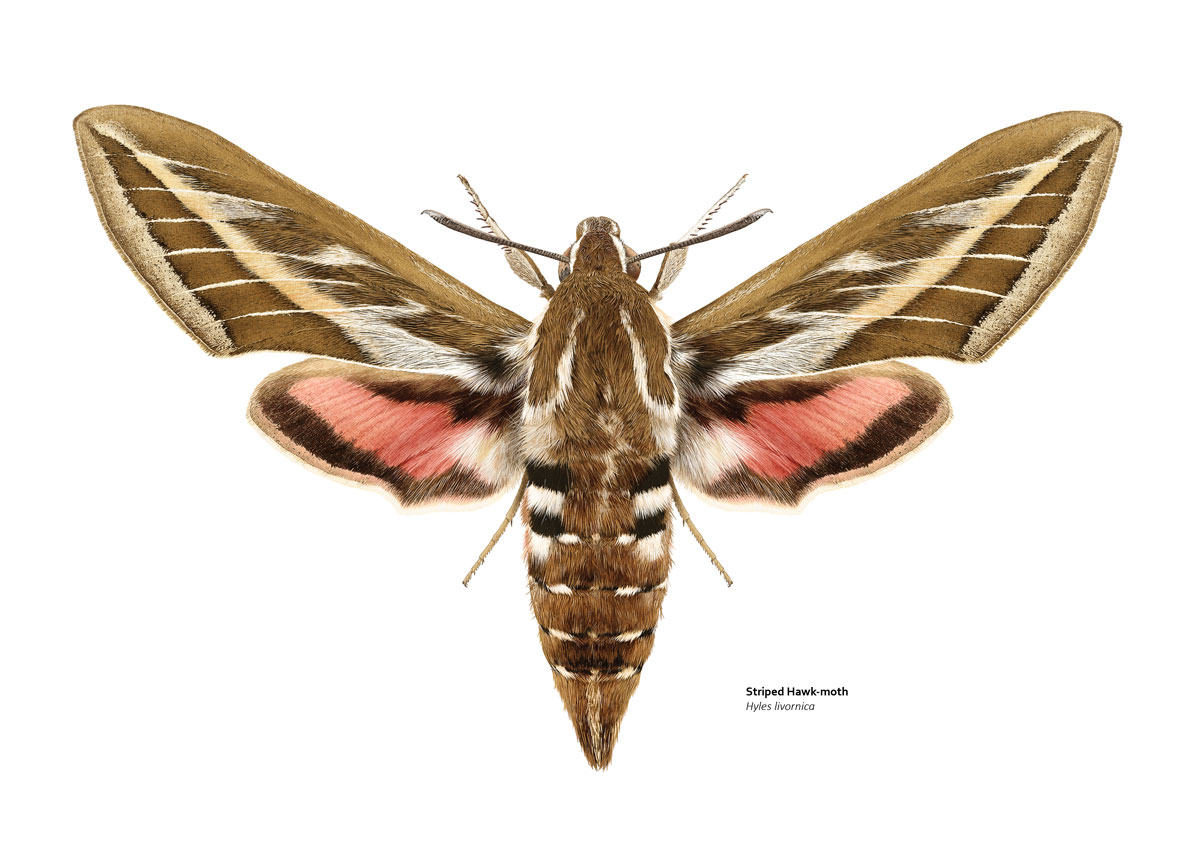Hyles livornica

| Distribution: | Africa & Asia |
| Size: | 60 – 90mm wingspan |
| Diet: | Willow-herbs, bedstraws, fuchsia (caterpillar), Nectar (adult moth) |
Hawkmoths are also known as Sphinx moths because, if threatened, their caterpillars will rear their thorax up with a lowered head, making them look (a bit) like an Egyptian Sphinx.
Hawkmoths are all excellent fliers, they can reach speeds of up to 12mph and are incredibly nimble – being adept at moving quickly move from side to side when trying to evade predators. Their sensitive antennae aid this impressive manoeuvrability – by measuring how their vibrating antennae are deflected by the coriolis force* during flight, the moth is able to sense how it is rotating through the air and adjust itself accordingly.
*‘an effect whereby a mass moving in a rotating system experiences a force (the Coriolis force ) acting perpendicular to the direction of motion and to the axis of rotation ‘ – you can thank Wikipedia for this definition.
Take a closer look…

